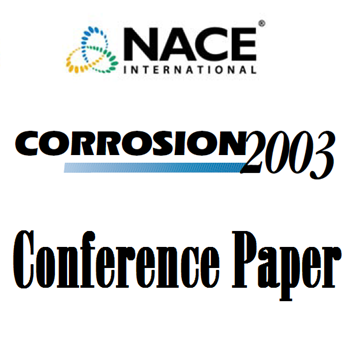Search
51314-4032-Application of the Statistical Modelling of Pipeline Corrosion Defects
Also Purchased
51315-5441-Refinery Piping Mechanical Integrity: Enhancing Assessments Using Statistical Tools
Product Number:
51315-5441-SG
ISBN:
5441 2015 CP
Publication Date:
2015
$20.00
01622 STATISTICAL METHOD FOR IDENTIFYING ACTIVE CORROSION BASED ON DATA FROM MULTIPLE IN-LINE INSPECTION RUNS
Product Number:
51300-01622-SG
ISBN:
01622 2001 CP
$20.00
03180 Advances in Corrosion Growth Analysis and Future Integrity Assessment of Pipelines
Product Number:
51300-03180-SG
ISBN:
03180 2003 CP
Publication Date:
2003
$20.00




